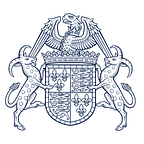Career profile | Robert Torday
‘If you’re lucky enough to work with clever people, anything’s possible,’ says Robert Torday (1976). Here we explore his career to date, which has spanned editorial, opera singing and, most recently, arts communications
Robert Torday matriculated at John’s in 1976 with an Exhibition in History, and went on to complete a degree in English here. Over the course of his career, he has worked in editorial for charities and in arts publishing, and also developed a career as an opera singer before founding his own arts communications agency in London, where he works with some of the leading architects in the world today.
Formative learning
Early in his career, Robert joined the publishing arm of what is now Scope, where his remit was to design and edit a series of textbooks focusing on children with Down’s syndrome. ‘This was an invaluable experience,’ he remembers, ‘as my duties included editing to deadline, laying out pages, dealing with printers and liaising with an editorial board.’
Into art history
Then came Robert’s lucky break, ‘I spotted an ad in the Guardian for the role of Editorial Assistant for The Burlington Magazine,’ he recalls. ‘I had no idea what this was, so headed to the library to do some research, and discovered the magazine had been founded by Roger Fry in 1903 and was regarded as the most important publication for international art historical research. I applied and was duly called for interview. The Editor was one Terence Hodgkinson — tall and immaculately dressed, white hair brushed with military precision, and a definite twinkle in his eyes. Previously Director of the Department of Sculpture at the V&A and then of the Wallace Collection, I’m not sure what Terence made of my shoulder-length hair and jeans, but he gave me the job.’
At The Burlington, Robert worked closely with the magazine’s Associate Editor Neil MacGregor, who later became Director of the National Gallery and then of the British Museum. Robert describes this time as ‘an extraordinary four-year education’.
Getting vocal
Encouraged by a fellow Johnian, Mark Tucker (1976), who was already enjoying success as a professional singer, Robert started to train his voice and needed to switch to a part-time job in order to dedicate more time to his vocal studies. ‘I joined a fine art PR consultancy run by Sue Bond, a remarkable woman, formerly Head of PR at Sotheby’s. There I wrote press material, cajoled journalists, organised events, and in the meantime went to singing lessons, learning as much repertoire as I could.’
Robert trained his voice with the Head of Vocal Studies at the Guildhall School of Music and Drama. He was after six months put forward for audition, and awarded a full scholarship to attend the two-year postgraduate Opera Course there. He went on to win a place in the chorus at Glyndebourne Opera, found himself an agent and ‘racketed around singing oratorio and operatic character roles in Canada, Barbados, Beirut and all over the UK.’ Robert hugely enjoyed this period of his life, but it soon became clear that his career needed to shift, and he rejoined a former agency he’d worked for, promoting the newly-completed Macmillan Dictionary of Art, which saw him touring the world.
A pivotal role
Having spent eighteen months on the road promoting the Dictionary, another job ad caught Robert’s eye — this time for the role of Head of Communications for the architect Richard Rogers. Of this experience, he reflects, ‘After three fairly grueling interviews, I landed the job — just in time to manage the media campaign for the launch of both the Millennium Dome and the government-commissioned Urban Task Force Report Towards an Urban Renaissance, which Richard chaired.’
He continues, ‘This was a real gear change in terms of responsibilities. I was now dealing with government policies and white papers; supporting Richard’s role as an adviser to Ken Livingstone, then Mayor of London; steering media campaigns for specific projects, from the Bordeaux Law Courts to Terminal 5; and helping orchestrate exhibitions at three Venice Architecture Biennales.’
Architecture expertise
Today, Robert runs his own agency, Belford Communications, which specialises in the built environment, supporting the work of a diverse range of architectural practices, from John McAslan + Partners, who designed the extraordinary transformation of King’s Cross Station, to Conran + Partners — in particular their redevelopment of the iconic Centre Point Tower in Central London, due to complete in 2018. Belford are also currently working with Wright & Wright, a practice whose portfolio includes the Hull Truck Theatre and, closer to home, an award-winning library at Corpus Christi, a contemporary intervention within the historic context of Cambridge, as pictured above.
On his career to date, Robert shares, ‘I have been extraordinarily fortunate in the remarkable and gifted people I have had the privilege to work for. Today I’m lucky to be working with an exceptional roster of clients, who keep me and my own team at Belford engaged and fascinated. If you’re lucky enough to work with clever people, anything’s possible.’
